Oops, Did My Tail Knock Over Your Coffee Again?
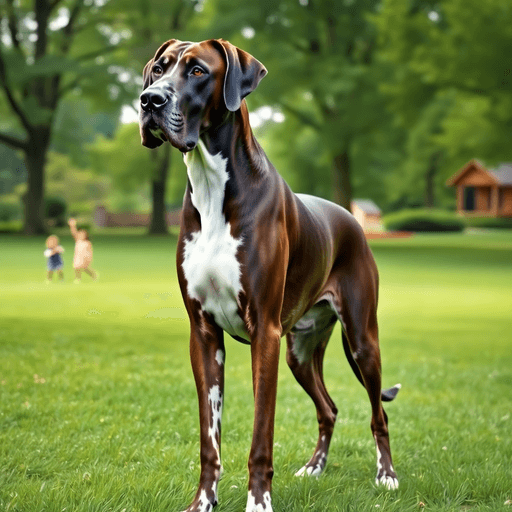
Biggest Challenges in Raising a Great Dane
Woof! Let me tell you about the most significant challenges my humans face when raising a magnificent creature like me – a Great Dane!
First up is this scary thing called bloat. My humans learned they have to put my food bowl way up high so I don’t gulp everything down like a furry vacuum cleaner. They also make me eat smaller meals throughout the day instead of one giant feast. I know, I know – where’s the fun in that? But my stomach can twist around if I’m not careful, and that’s definitely not good for anyone.
Then there’s my crazy growth spurts. One day I’m a cute little puppy, and the next day I’m accidentally knocking over coffee tables with my tail! My humans had to buy special large-breed food that costs more than their groceries. I keep telling them I’d be happy with pizza, but they insist on this fancy kibble.
Speaking of size, my humans had to build a 6-foot fence because I’m tall enough to peek over anything shorter. They also bought me the fluffiest, most supportive bed because my joints need extra care. I’m living like a four-legged king!
My humans also spent tons of time socializing me when I was a tiny pup. They took me everywhere between 8 and 16 weeks old, so I learned that not every doorbell means it’s time to bark like crazy.
The hardest part? My humans worry about vet bills and know our time together is shorter than with smaller dogs. But hey, I make every moment count with my goofy personality and gentle giant hugs!
Managing Life-Threatening Health Conditions
Hi there! I’m a Great Dane, and let me tell you – being this big comes with some pretty serious stuff my humans need to watch out for. Sure, I’m a giant teddy bear who thinks I’m still lap-sized, but my body has some quirks that could get me in real trouble.
The scariest thing is something called bloat. It’s when my stomach gets twisted up like a balloon animal gone wrong. Not fun! My humans help prevent this by putting my food bowl up high so I don’t have to bend down like I’m doing yoga. They also give me smaller meals throughout the day instead of one giant feast (even though I’d be up for that). Dietary influences play a significant role in preventing bloat and other digestive issues.
And after dinner? No zoomies allowed! I’ve to chill out for a while, which is honestly pretty easy for a couch potato like me.
My heart is another thing to worry about. It’s huge like the rest of me, but sometimes it doesn’t work quite right. That’s why I get to visit the vet for special heart pictures every year. It’s like getting a photo shoot, except way less glamorous, and they put weird gel on my chest.
When I was a puppy, my humans were really careful about what I ate and how much I played. Too much running around can mess up my growing joints, and apparently, giving me extra calcium makes things worse, not better. Who knew? Gulping air is another factor that can contribute to my risk of bloat, so my humans are always careful to keep things calm during meal times.
The bottom line? My humans stay on top of this stuff because these problems can escalate quickly. But with reasonable care, I get to keep being everyone’s favorite gentle giant!
Navigating Rapid Growth and Size-Related Care
You know how some kids hit growth spurts? Well, imagine gaining 100-150 pounds in less than two years! That’s me going from adorable puppy to “Holy cow, is that actually a dog?” in record time. My humans were constantly buying me bigger beds, and I kept outgrowing them before they even got the tags off!
The tricky part about being a speed-growing giant is that my bones and joints needed some serious TLC during this crazy time. My vet explained that growing too fast can mess up my skeleton – and trust me, when you’re going to be this big, you want everything built right the first time! To help prevent developmental orthopedic diseases, my humans had to become food scientists, measuring out special large-breed puppy food with just the right amounts of calcium and phosphorus.
Too much food made me grow even faster, which sounds awesome but actually puts my bones at risk. I learned that sometimes “slower and steadier” beats “bigger and faster” – even for us Great Danes! To support my growth, my humans ensured I was getting the right caloric requirements based on my activity level.
The hardest part? Exercise restrictions! While my smaller dog friends were bouncing around like popcorn, I had to stick to gentle walks and low-key play. No jumping, no marathon running sessions – just nice, strolls until my growth plates finish doing their thing. This careful approach to exercise is crucial for maintaining healthy joints as I grow.
It was like being on doggy bed rest, but it kept my joints healthy for my giant future!
Training and Socializing a Giant Breed
I went from tiny fluffball to giant goofball in just 18-24 months. Can you believe that? My humans had to teach me manners FAST because nobody wants a poorly behaved dog who weighs as much as a person!
When I was little, my family worked with me every single day on the basics. “Sit” was pretty easy – my bottom was already close to the ground anyway. “Stay” was harder because there were so many exciting things to sniff and explore! “Down” became my favorite once I realized how comfy it was to sprawl out like a furry rug. Positive reinforcement techniques were very helpful during my training sessions.
The best part of puppyhood was meeting everyone and everything between 8 and 16 weeks old. I got to see kids, cats, vacuum cleaners (scary!), delivery trucks, and even a parrot that said “hello” back to me. My humans called this “socialization,” but I called it “the best field trips ever!”
Here’s the thing about us Great Danes – whatever personality we develop as puppies pretty much sticks with us forever. So if you want a friendly giant like me instead of a worried wrecking ball, you’ve got to start early. Early training is essential to ensure we develop good behaviors and habits!
Trust me, teaching a 150-pound adult dog new tricks is like trying to move a very stubborn, huge couch that has its own opinions!
Providing Adequate Space and Living Environment
I’m talking about room to stretch these long legs without knocking over your favorite lamp (sorry about that, by the way). When I stand up, my head reaches about 32 inches high, so those low-hanging ceiling fans? Yeah, they’re not my friends. It’s important to remember that adequate living space helps prevent issues like joint stress and anxiety.
Sorry about that lamp – when you’re 32 inches of gentle giant, low-hanging ceiling fans become your sworn enemies.
Make sure your doorways are wide enough for me to walk through without doing that awkward sideways shuffle. Inside your house, I need space to turn around without bumping into your furniture. Trust me, your coffee table doesn’t want to meet my tail when I’m excited to see you come home.
And please, can we talk about those outdoor areas? A tiny fence just won’t cut it. I need at least 6 feet of fencing because, despite my size, I’m basically a giant puppy who might try to hop over to say hi to the neighbors.
Now, about sleeping – regular dog beds are like trying to fit on a toddler’s cot. My joints need serious support, or I’ll wake up creakier than your grandpa’s rocking chair. Creating a comfortable living space is essential for my well-being.
And those stairs? When I’m a puppy or getting older, they’re like Mount Everest. Maybe some ramps would be nice?
Oh, and that kitchen counter? It’s basically at nose level for me, so keeping snacks up there’s like putting candy in front of a kid. Help a dog out by storing the good stuff somewhere I can’t accidentally “find” it.
Give me enough space to be myself, and I promise to be the best gentle giant roommate you’ve ever had!
Planning for High Veterinary Costs and Shorter Lifespan
First off, let me be honest with you. We Great Danes are living, breathing money pits with wagging tails. I know, I know – we’re absolutely gorgeous and amazing, but keeping us healthy isn’t cheap. Think of us as the luxury cars of the dog world, except we eat your shoes and drool on your furniture.
Here’s the thing about us big guys – everything costs more because, well, we’re HUGE! When I need medicine, the vet can’t just give me a tiny pill like those little Chihuahuas get. Nope, I need the jumbo-sized everything. It’s like the difference between filling up a motorcycle and filling up a monster truck.
My joints are my most significant problem area. All this magnificence comes with creaky knees and achy hips, so I’ll need lots of checkups to make sure my bones are doing okay. Regular assessments are crucial for monitoring orthopedic issues, ensuring timely intervention and care.
And don’t even get me started on something called bloat – it’s scary stuff that can happen to deep-chested dogs like me, so my humans have to watch me super carefully after meals.
Now here’s the part that makes me sad to talk about – we Great Danes only stick around for about 8 to 10 years. I know it’s not fair, but that’s just how we’re built. The bigger the dog, the shorter the time we get with our favorite humans.
But hey, we pack a lot of love into those years!
Because our time together is shorter, we need more frequent vet visits to catch any problems early. Think of it like getting your car checked more often if you know it might’ve issues.
Emergency vet visits are especially expensive for us giants. Regular dog-sized equipment doesn’t always work on us – we need the extra-large, heavy-duty stuff. Plus, when something goes wrong with a 150-pound dog, it’s automatically more complicated than fixing a 15-pound poodle.
My advice? Get pet insurance for us as soon as you bring us home, before we develop any health problems. Insurance companies won’t cover expenses for things we already have wrong with us.
Also, start saving money in a special “Great Dane medical fund” because trust me, you’ll need it. In fact, lifetime healthcare costs for Great Danes are expected to exceed $15,000 to $25,000, so start planning early!
Look for insurance that covers specific health issues associated with big breeds. Some companies know that dogs like me are more likely to have certain issues, and they plan for it.
Even though taking care of me might cost more and our time together is shorter, I promise we’re worth every penny and every precious moment.
We’ll love you with our whole huge hearts and make every single day an adventure. Just maybe start saving up now, okay?
Your devoted (and expensive) Great Dane friend
Final Thoughts
First off, let’s talk about my stomach. Did you know my heart alone weighs about 2-3 pounds? That’s like having a whole newborn baby’s worth of heart muscle pumping in my chest! Sometimes my belly gets twisted up in something called bloat, and trust me, it’s as scary as it sounds. My humans have to watch what I eat and when I exercise. No more wolfing down dinner and then playing fetch right away – even though I really, really want to!
Then there’s the whole “being gigantic” thing. I don’t mean to knock over your coffee table with my tail, but have you seen how big this thing is? And don’t get me started on trying to be a lap dog. I know I’m 150 pounds, but your lap looks so cozy! Sometimes I forget I’m not a tiny puppy anymore.
My humans also worry about money stuff – vet bills, food costs, and buying bigger everything. Apparently, I eat A LOT. Who knew?
But here’s the thing: when my family keeps an eye on my health, teaches me good manners, and plans ahead for my needs, we make an amazing team. Sure, I’m high-maintenance, but I’m also high-love! And honestly, wouldn’t you want a gentle giant like me as your best friend?
References
- https://spotpet.com/blog/breed-tips/common-health-problems-in-great-danes
- https://www.webmd.com/pets/dogs/what-to-know-great-danes
- https://www.petmd.com/dog/breeds/great-dane
- https://www.akc.org/expert-advice/health/great-dane-life-span/
- https://vetschoice.guildinsurance.com.au/dogs/dog-breeds/great-dane
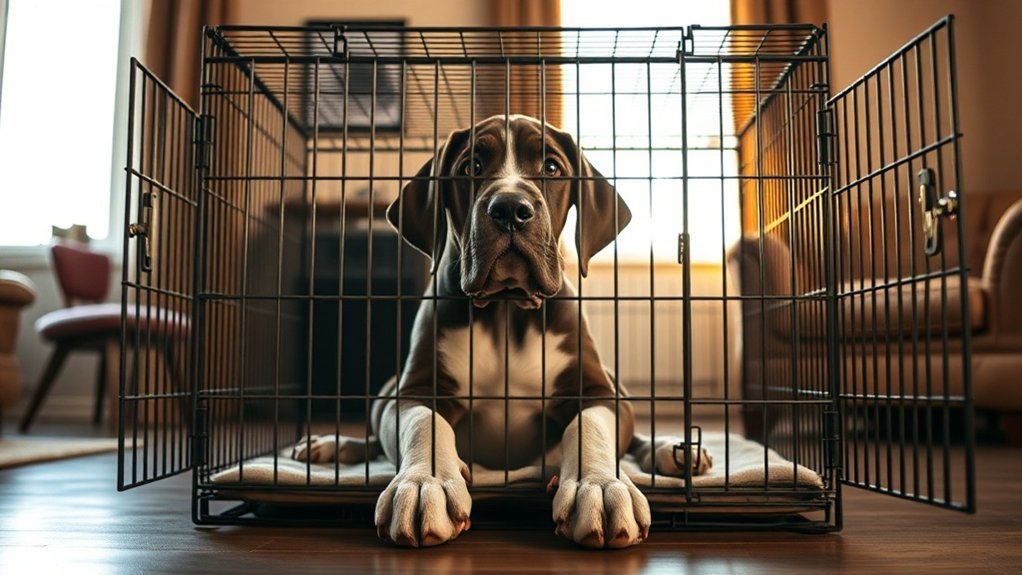
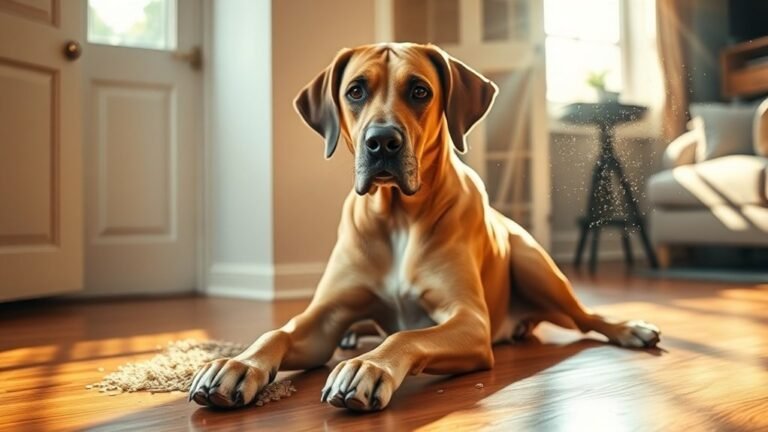
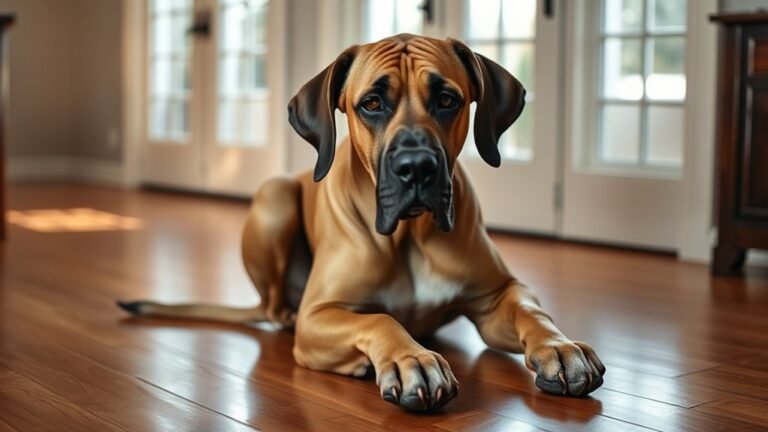

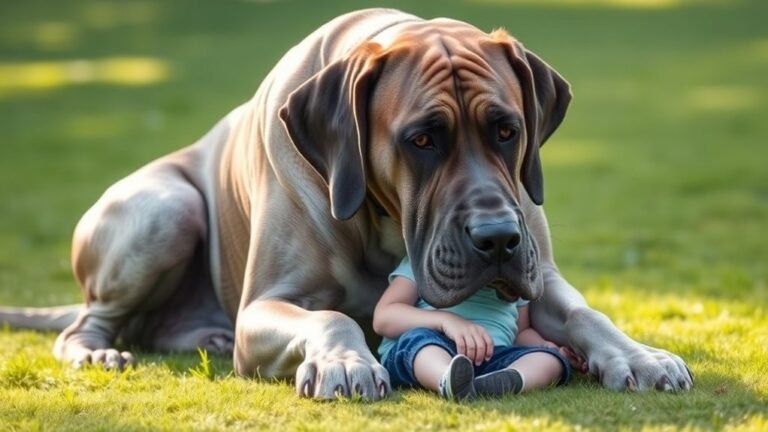

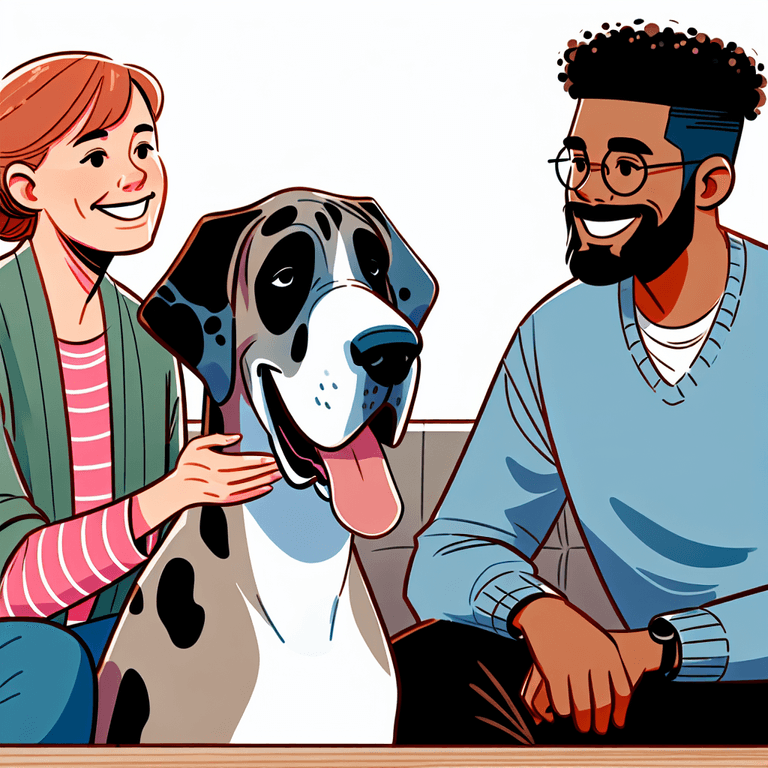
21 Comments